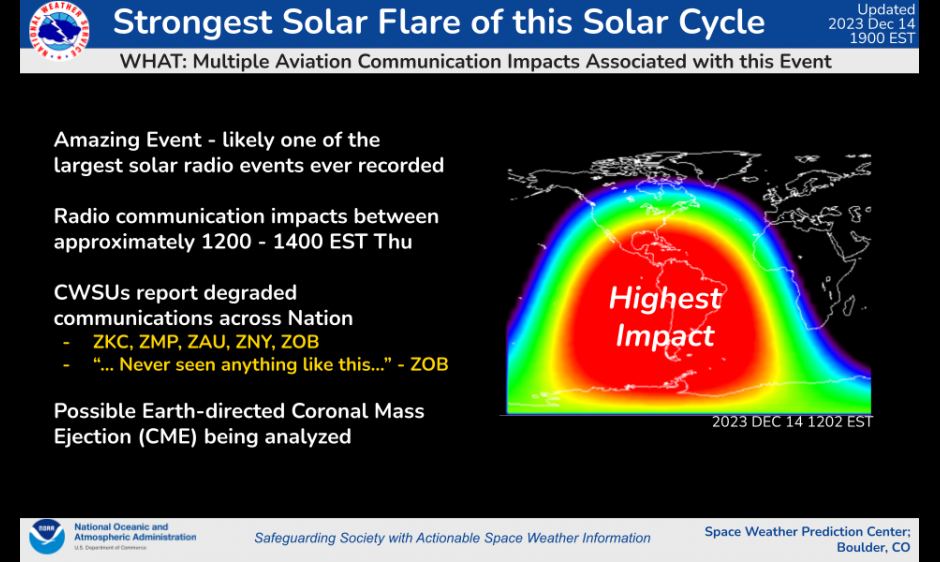On December 14th, at 12:02 PM Eastern (09:02 AM Pacific), the Sun unleashed a massive solar flare. According to the Space Weather Prediction Center, part of the National Oceanic Atmospheric Administration (NOAA), this was the strongest flare of Solar Cycle 25, which began in 2019 and will continue until 2030. What’s more, scientists at the SWPC estimate that this may be one of the most powerful solar flares recorded since 1755 when extensive recording of solar sunspot activity began.
Solar flares occur in the Sun’s active regions, and activity varies over an 11-year solar cycle. This phenomenon is believed to result from stored magnetic energy in the Sun’s atmosphere accelerating charged particles in the surrounding plasma. These flares release radiation across the electromagnetic spectrum and are often accompanied by Coronal Mass Ejections (CME) and other solar phenomena. According to the SWPC, this recent flare may have triggered an Earth-bound CME, which they are currently analyzing.

The SWPC also localized the flare to Region 3514, located over the far northwest area of the Sun. The flare caused interference with radio communications on Thursday, December 14th, between 12:00 PM to 02:00 PM EST (09:00 AM to 11:00 AM PST). According to the National Weather Service (NWS), Center Weather Service Units (CWSU) from the Eastern Seaboard to the Midwest reported interference with aircraft communications. The SWPC recommends that people continue to monitor their web page for the latest information and updates on the CME.
Further Reading: SWPC-NOAA

